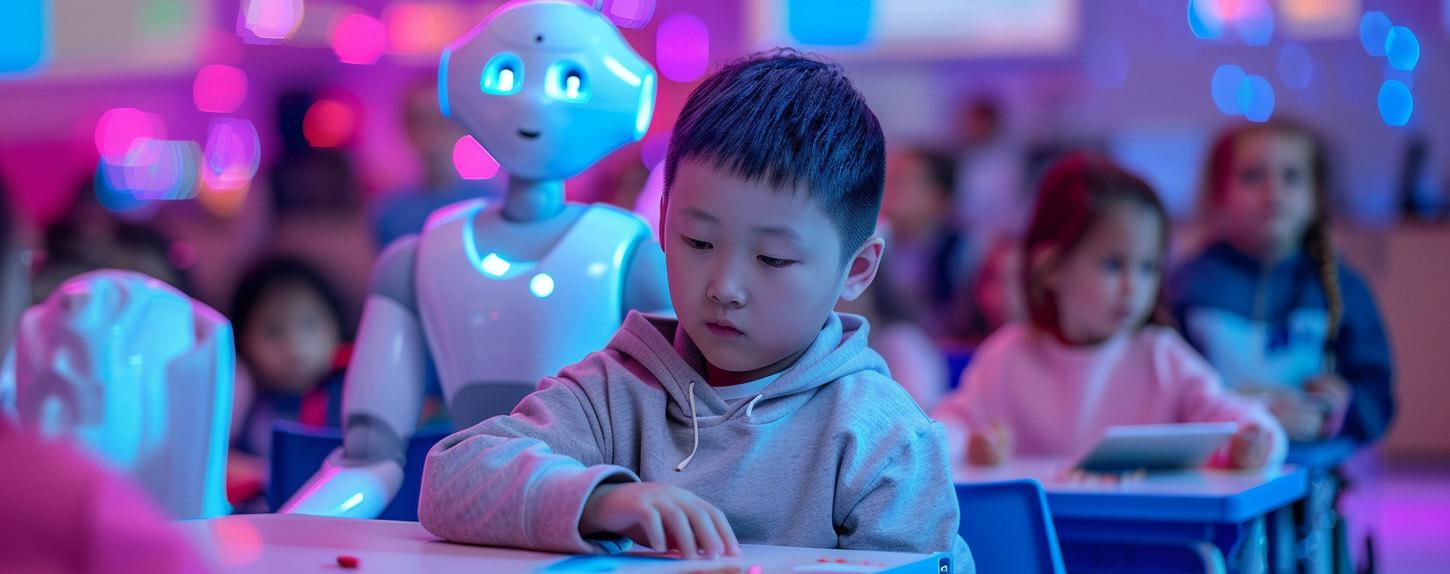How AI Empowers students with Disabilities: Transforming Education for Inclusive Learning
In today’s rapidly evolving educational landscape, inclusive learning is no longer just an ideal—it’s a necessity. As schools and universities strive to accommodate diverse learners, artificial intelligence (AI) has emerged as a game-changer. By breaking down barriers and personalizing education, AI is not only empowering students with disabilities but also transforming classrooms into enriching, accessible, and equitable learning spaces. This article explores how AI empowers students with disabilities,the innovative tools making a difference,and practical tips for educators to harness the power of AI for inclusive education.
The Role of AI in Inclusive Education
AI-driven technologies are paving the way for students with visual, auditory, cognitive, and mobility challenges to participate fully in educational experiences.From AI-powered speech recognition to personalized learning platforms, the focus is on providing support tailored to individual needs, thereby removing obstacles to effective learning.
- Accessibility: AI enhances accessibility by offering real-time transcription, screen readers, and image recognition.
- Personalization: Intelligent systems adapt content delivery, pace, and assessment methods to fit each learner’s abilities.
- Engagement: Interactive AI tools foster active participation thru gamified learning and dynamic feedback.
Benefits of AI for Students with Disabilities
Key Advantages at a Glance
- Improved Dialog: AI-powered chatbots and text-to-speech applications facilitate communication for students with speech or language impairments.
- Customizable Learning Materials: AI enables adaptive content, offering materials in multiple formats (audio, visual, simplified text) for diverse learning needs.
- Real-Time Assistance: Students receive instant help, whether it’s solving math problems or understanding complex scientific concepts.
- Empowerment and Independence: With AI tools, students can work more autonomously, building confidence and self-advocacy skills.
- Accessibility Compliance: Educational institutions leverage AI to ensure content meets WCAG and other accessibility standards.
AI Tools and Technologies Revolutionizing Accessibility
There is a growing ecosystem of AI-powered tools for disabilities designed specifically to address various learning challenges:
1. Speech Recognition and Generation
- Text-to-Speech (TTS): Converts written content into spoken words, assisting students with visual impairments or dyslexia.
- Speech-to-Text (STT): Transcribes spoken words to text, supporting those with hearing impairments or difficulties with written communication.
2. AI-powered Screen Readers
-
Tools like Microsoft’s seeing AI use deep learning to describe images, read documents aloud, and recognize faces—all in real-time.
3. Adaptive Learning Platforms
- Smart content curation adapts reading material to each learner’s reading level, while personalized assessments adjust question complexity based on student responses.
-
Examples: Knewton, SensusAccess.
4. AI Chatbots and Virtual Assistants
-
Digital assistants like Google Assistant, Apple Siri, and customized classroom bots help students with reminders, scheduling, and answering content-related questions.
5. AI in Assistive Writing Tools
-
AI-powered spellcheckers, grammar correction, and predictive text benefit students with dyslexia, dysgraphia, or limited motor skills. Example: Grammarly.
Case Studies: AI Transforming Student Experiences
Case Study 1: AI-Powered Math Tutoring for Students with Dyscalculia
In a pilot program at a California middle school, an AI math tutor customized lessons based on each student’s learning speed and error patterns.Students with dyscalculia reported increased understanding and reduced anxiety,with test scores improving by 18% on average.
Case Study 2: real-Time Captioning in University Lectures
The University of Melbourne introduced real-time AI captioning in large lecture halls. Deaf and hard-of-hearing students were able to follow lectures more effectively, with a reported 95% satisfaction rate. Lecturers also noticed enhanced participation among students with and without hearing impairments.
Case Study 3: Personalized E-Textbooks for Visually Impaired Students
A high school in the UK adopted AI-driven e-textbooks with adjustable font size, color contrast, and audio features. visually impaired students reported greater independence and improved exam performance after transitioning to inclusive materials.
First-Hand Experiences: Students and Educators Share Their Stories
“Before we had AI captioning, I always felt a step behind in lectures. Now, I see conversations unfold in real-time, just like everyone else. I participate more. I feel included.”
— Mia, University student with hearing loss
“AI writing assistants changed my classroom. My students with dyslexia now focus on their ideas, not their spelling. Their confidence soared.”
— Mr. Jacobs, High school English teacher
Practical Tips: Implementing AI for Inclusive Learning
- Assess Student Needs: Start by understanding the unique needs of your students, then match appropriate AI-powered tools.
- Pilot & Iterate: Introduce new technologies in small pilots, gather feedback, and adapt implementation based on student and teacher experiences.
- Train Educators: provide professional advancement about AI functionalities and accessibility best practices.
- See Accessibility as a Journey: Regularly evaluate and update your technology stack to keep up with evolving AI solutions.
- Promote Student Agency: Encourage students to explore AI tools that best match their learning styles and preferences.
Challenges and Future Trends
While AI holds transformative potential, it’s crucial to address associated challenges:
- Privacy and Data Security: Ensure student data is protected when using AI-powered applications.
- Equitable Access: Not all students or schools have equal access to advanced technology—bridging the digital divide remains a priority.
- Bias in AI Algorithms: Continuous evaluation is needed to prevent unintended biases and ensure fair outcomes for all learners.
Looking ahead, AI will continue to evolve, with advances in natural language processing, computer vision, and emotion recognition making education even more responsive to individual needs. Collaborative partnerships between educators, technologists, and disability advocates will be crucial for maximizing the benefits of AI in education.
Conclusion: the Power of AI to Create Truly Inclusive classrooms
AI is transforming education by empowering students with disabilities and promoting a culture of inclusivity. From practical classroom tools to wide-reaching accessibility solutions, the smart use of AI narrows achievement gaps while enriching the learning experience for all. By embracing AI-powered inclusive learning strategies, educators and institutions can unlock every student’s potential, ensuring that education is truly for everyone.
Whether you’re a teacher, parent, student, or administrator, now is the time to explore the possibilities of AI in education. Together, we can shape a more accessible, equitable, and inspiring future for learners of all abilities.

